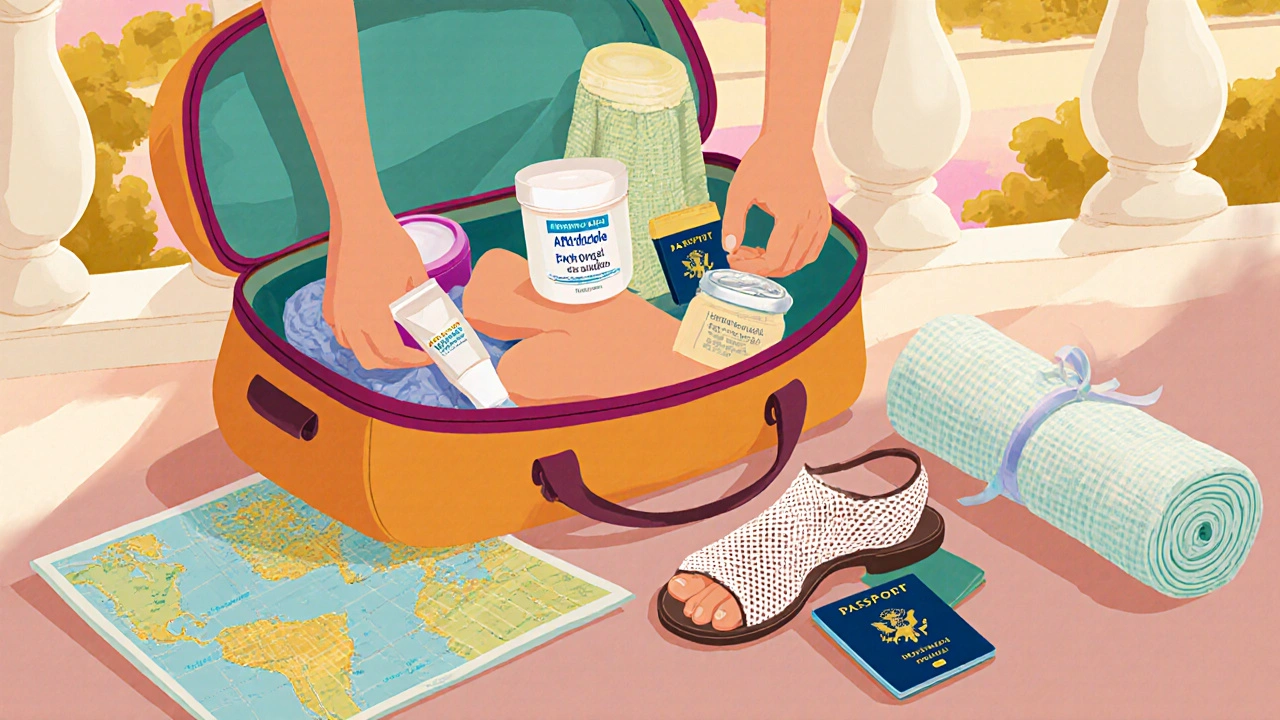Ringworm Prevention: Simple Steps to Stay Fungal‑Free
When tackling ringworm prevention, the practice of stopping the spread of dermatophyte infections that cause itchy, circular skin patches. Also known as tinea corporis control, it involves everyday habits that keep the fungus at bay.
Understanding the enemy helps you win. Dermatophytes, the group of fungi that cause ringworm on skin, hair, and nails thrive in warm, moist places and jump from person to person via direct contact or shared objects. They love locker rooms, swimming pools, pet bedding, and even the occasional gym towel. The moment you break their chain, you cut the infection in half. That’s why personal hygiene, regular washing, drying, and cleaning habits that remove fungal spores becomes the first line of defense. Simple actions—showering after workouts, drying feet thoroughly, and not sharing personal items—create an environment where dermatophytes can’t settle.ringworm prevention also benefits from quick‑acting antifungal creams, topical medications like clotrimazole, terbinafine, or miconazole that treat early spots and reduce spread. Applying a thin layer at the first sign of a red, scaly patch not only clears the infection but also eliminates the reservoir of spores that could infect others.
Practical Strategies You Can Start Today
First, keep skin dry. Moisture is a fungus’s favorite playground, so use absorbent socks, change sweaty clothes promptly, and let shoes air out after use. Second, treat shared spaces like gyms and swimming pools as potential hotspots. Wipe down benches, shower stalls, and pool decks with an antifungal spray or a diluted bleach solution—research shows a 1:10 bleach mix kills most dermatophytes within minutes. Third, if you have pets, check them for ring‑like lesions and ask a vet about topical or oral antifungals; animals often act as silent carriers. Fourth, maintain clean laundry habits. Wash towels, bedding, and clothing in hot water (at least 60°C/140°F) and dry on high heat; heat destroys fungal spores that survive the wash cycle. Finally, stay vigilant. Early symptoms can look like eczema or dry skin, but a quick self‑check—look for a ring‑shaped, slightly raised, reddish border—lets you act before the infection spreads. When you blend these habits, you create a multilayered shield that stops the fungus at every entry point.
The articles below dive deeper into each of these areas. You’ll find detailed explanations of how fungi spread in common environments, step‑by‑step guides for cleaning and disinfecting, reviews of the most effective over‑the‑counter creams, and tips for protecting families and pets. Armed with this knowledge, you can confidently protect yourself and others from ringworm’s itchy grip.

Top Prevention Strategies for Travelers at Risk of Ringworm
Learn proven ringworm prevention tactics for travelers, from packing antifungal gear to daily hygiene habits, early treatment steps, and post‑trip cleaning.
